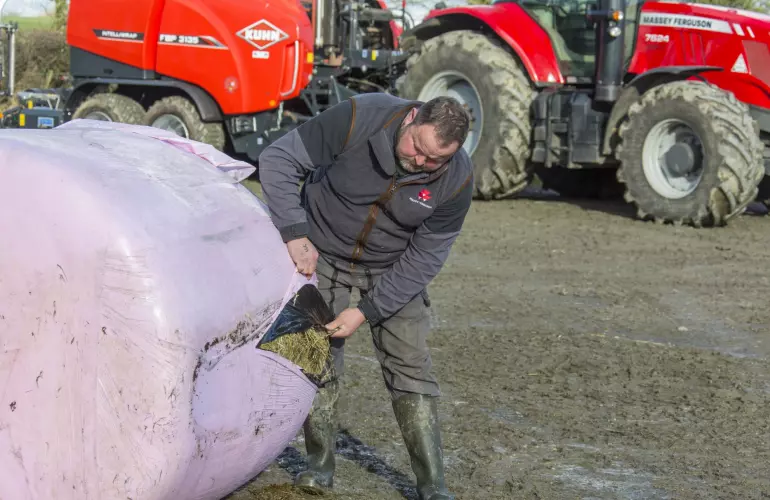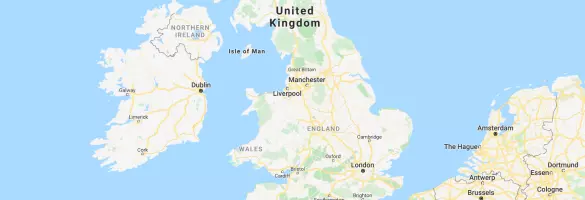
Avoiding net binding of silage bales offers more than just easier recycling, reports Matt Mellor
For farmer and contractor Mike Hughes, having a baler-wrapper combination with film-binding capability is as much about forage quality as any of the other advantages that this technology offers.
He knows this from his own experience - making around 2,000 round bales for his 80 cow suckler herd - and from feedback from dairy and beef farmers around Haverfordwest where he provides a contracting service.
Mike says: “The initial attraction of film binding is that you avoid using net wrap and no longer have the hassle of separating two materials before disposal or recycling. But for me the real benefit is producing better quality silage.
“We operate a forage-based system at home and make all our silage in round bales, so we put a lot of emphasis on getting the job right. I’ve seen no mold on film-bound bales at all, and that’s an indication that bales are totally sealed from the start and no air is getting in at any stage. It stands to reason, as we are effectively wrapping bales in an extra three layers of film, but we’re doing this without adding cost so there really is no downside.”

Mike took delivery of a Kuhn FBP 3135 Balepack in July last year, about half way through his baling season, and has to date done around 4,000 bales with the machine. Although it is possible to use net binding with this machine – as the binding and wrapping functions are independent – he’s been committed to the film binding approach from day one and has found his contracting customers have been happy to accept the change.
“We’ve managed to keep the cost about the same, even though film is a little bit more expensive than net, and that’s possible because of the flexibility that this machine offers,” explains Mike. “Most importantly, with Kuhn’s IntelliWrap system, we have the option of applying as many layers of film as we choose, so four, five, six or seven, for example. The previous machine we had only offered four, six or eight layer options. This means it’s easier to reduce the outer wrap by one layer, to save costs, given that you’ve already applied three layers for binding the bale.
“It’s the customer’s choice, at the end of the day, and it will often depend on how much they value silage quality.”

It was the patented film binding technology that really convinced Mike to plump for the Kuhn machine when making the change last year. ‘Machine of the Year’ in the AgriTechnica forage harvesting category in 2018, and a LAMMA Silver Award winner in 2019, the FBP Balepack uses two standard 750mm stretch film rolls to fully encapsulate the bale. As well as improving silage preservation and making the recycling of waste plastic easier, it reduces plastic usage by up to 30% by pre-stretching the wrapping film by 70%, prior to application. Film loading is also quicker and easier as each roll weighs just 27kg, compared to the wider rolls used on other film binding systems which can weigh between 40-90kg.
As a contractor as well as a farmer, Mike is also interested in speed of operation, not only of the wrapping, but also for the baling part of the operation.
“It’s part of a contractor’s job to be able to cope with different crop conditions and to be in and out as quickly and efficiently as possible,” he adds. “For me the pick-up and feed in to the baler is critical, as I need a machine that can cope with the heaviest of crops and deal with the shorter grass that we are sometimes presented with. So far, we’ve found performance in the field to be problem free, whatever the conditions. That’s mainly down to the rotor auger on the baler intake, which is second to none.”
Customer feedback is important, and Mike is pleased to have had good news back from one farmer who views bale quality as particularly important.
“We work with one dairy farmer where bales made during the summer as part of the grazing management process are then used as supplementary feed for the out-wintered replacement heifers,” explains Mike. “The bales are left out in the field and the wrap is removed as required and the quality has been so good that heifers have actually put on condition this winter. In addition, there’s just the plastic to deal with, and no net to separate, so everyone is happy.”
KUHN - FBP 3135 IN ACTION

